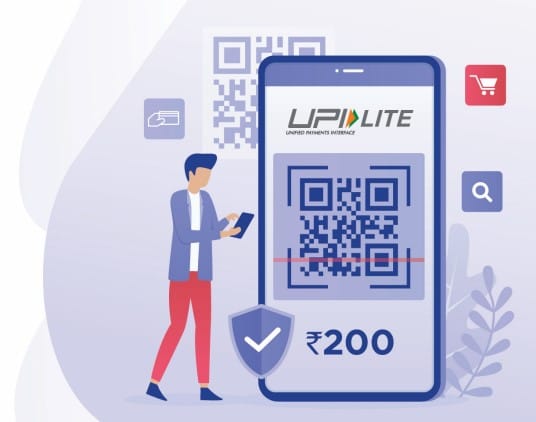UPI limits are set by the National Payments Corporation of India (NPCI) and can vary based on the type of transaction and the bank involved. Generally, the standard UPI transaction limit for peer-to-peer payments is ₹1 lakh per day. However, this limit can differ for specific transaction categories and banks.
Standard UPI Transaction Limits
- Peer-to-Peer Transactions: The standard limit for peer-to-peer (P2P) transactions is ₹1 lakh per day.
- Merchant Transactions: For transactions involving merchants, such as payments for goods and services, the limit can be higher. For example, transactions related to capital markets, insurance, and foreign inward remittances have a limit of ₹2 lakh per day.
- Special Categories: Certain transactions, such as those for Initial Public Offerings (IPOs) and the RBI Retail Direct Scheme, have a higher limit of ₹5 lakh per transaction.
Bank-Specific UPI Limits
While NPCI sets the general guidelines, individual banks have the discretion to set their own UPI limits. These limits can vary significantly from one bank to another. Here are some examples:
- State Bank of India (SBI): SBI has a daily UPI transaction limit of ₹1 lakh.
- HDFC Bank: HDFC Bank allows UPI transactions up to ₹1 lakh per day.
- ICICI Bank: ICICI Bank also follows the standard limit of ₹1 lakh per day.
Here’s a table summarizing the UPI limits per day for various banks and apps:
| Bank/App | Daily UPI Limit | Notes |
|---|---|---|
| State Bank of India (SBI) | ₹1,00,000 | Standard limit for most transactions |
| HDFC Bank | ₹1,00,000 | Standard limit for most transactions |
| ICICI Bank | ₹1,00,000 | Standard limit for most transactions |
| Axis Bank | ₹1,00,000 | Standard limit for most transactions |
| Punjab National Bank (PNB) | ₹1,00,000 | Standard limit for most transactions |
| Bank of Baroda | ₹1,00,000 | Standard limit for most transactions |
| Paytm | ₹1,00,000 | Standard limit for most transactions |
| PhonePe | ₹1,00,000 | Standard limit for most transactions |
| Google Pay | ₹1,00,000 | Standard limit for most transactions |
| Amazon Pay | ₹1,00,000 | Standard limit for most transactions |
| UPI Lite | ₹10,000 | Designed for small-value transactions. |
| UPI 123Pay | ₹10,000 per transaction | For feature phone users, no internet required. |
| Capital Market Transactions | ₹2,00,000 | Higher limit for specific transactions. |
| Insurance Transactions | ₹2,00,000 | Higher limit for specific transactions. |
| Foreign Inward Remittances | ₹2,00,000 | Higher limit for specific transactions. |
| IPO and RBI Retail Direct Scheme | ₹5,00,000 per transaction | Higher limit for specific transactions. |
These limits can vary based on the bank’s policies and the type of transaction. Always check with your bank or UPI app for the most accurate and up-to-date information.
UPI Lite and UPI 123Pay
In addition to the standard UPI, there are other variants like UPI Lite and UPI 123Pay, which cater to specific needs:
- UPI Lite: Designed for small-value transactions, UPI Lite has a lower per-transaction limit of ₹10,000.
- UPI 123Pay: This service is aimed at feature phone users and has a per-transaction limit of ₹10,000.
Factors Influencing UPI Limits
Several factors can influence the UPI transaction limits set by banks:
- Customer Profile: Banks may set different limits based on the customer’s profile, including their account type and transaction history.
- Security Measures: To enhance security, banks might impose stricter limits on new accounts or accounts with unusual activity.
- Regulatory Changes: NPCI and the Reserve Bank of India (RBI) periodically review and update UPI transaction limits to ensure safety and efficiency.
FAQs on UPI Limits
Q1: What is the maximum amount I can transfer using UPI in a day?
A1: The standard limit for UPI transactions is ₹1 lakh per day for peer-to-peer payments. However, this can vary based on the bank and the type of transaction.
Q2: Are there different limits for different types of UPI transactions?
A2: Yes, transactions related to capital markets, insurance, and foreign inward remittances have a higher limit of ₹2 lakh per day. For IPOs and the RBI Retail Direct Scheme, the limit is ₹5 lakh per transaction.
Q3: Can banks set their own UPI limits?
A3: Yes, individual banks have the discretion to set their own UPI limits, which can vary from the standard limits set by NPCI.
Q4: What are UPI Lite and UPI 123Pay?
A4: UPI Lite is designed for small-value transactions with a per-transaction limit of ₹10,000. UPI 123Pay caters to feature phone users and also has a per-transaction limit of ₹10,000.
Q5: How can I check my bank’s UPI limit?
A5: You can check your bank’s UPI limit by visiting their official website or contacting their customer service.
Q6: Are there any charges for exceeding the UPI limit?
A6: Generally, there are no charges for exceeding the UPI limit as transactions beyond the limit are simply not processed. However, it’s always best to check with your bank for specific policies.
Q7: Can I increase my UPI limit?
A7: Some banks may allow you to request an increase in your UPI limit based on your transaction history and account profile. Contact your bank for more details.
Q8: Is there a limit on the number of UPI transactions per day?
A8: Yes, users are typically restricted to a maximum of 20 UPI transactions in a single day.
Conclusion
Understanding the UPI limits per day is essential for managing your transactions effectively. While the standard limit is ₹1 lakh per day for most transactions, specific categories and banks may have different limits. Always check with your bank for the most accurate and up-to-date information regarding UPI limits.
By staying informed about these limits, you can ensure smooth and hassle-free transactions, making the most of the convenience and efficiency that UPI offers.

